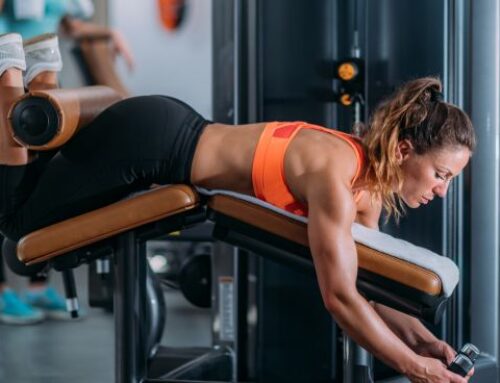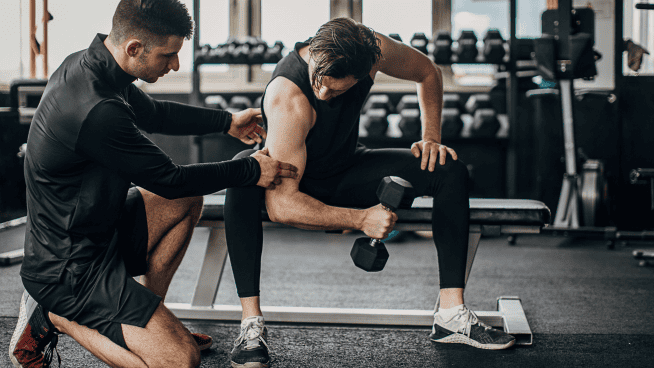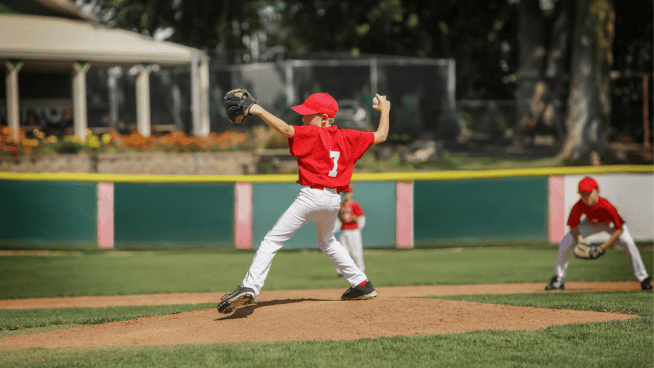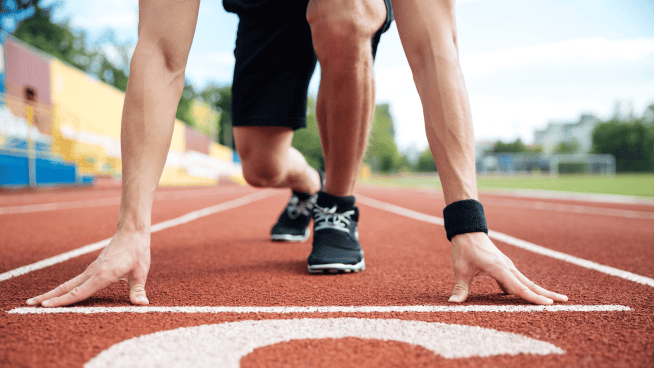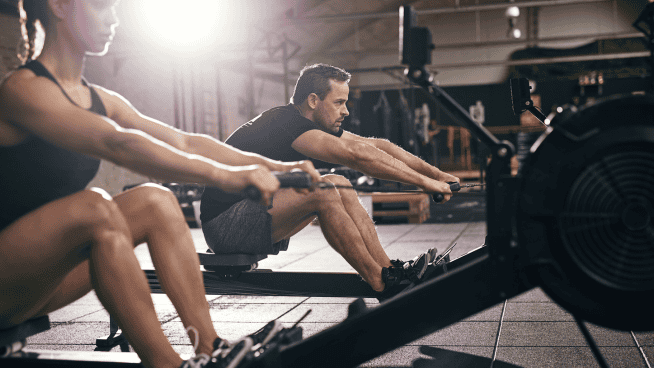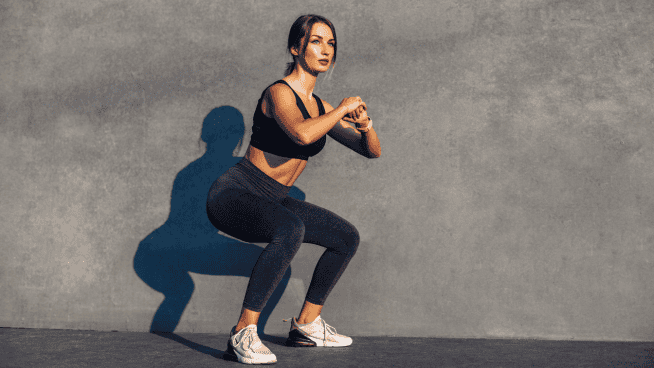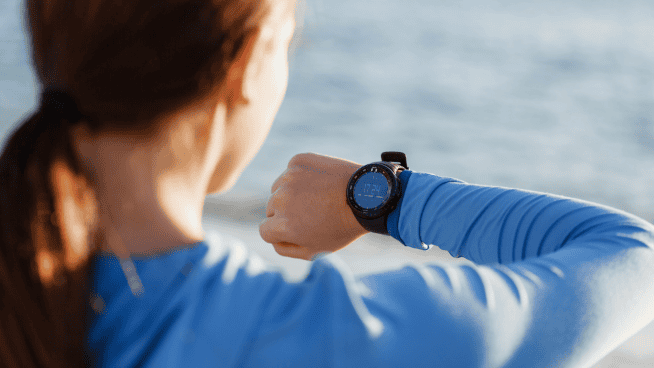Strength Exercises to Develop Football Speed
For a football player, strength training doesn’t mean much if it doesn’t translate into unstoppable power on the field. However, it may be difficult to decipher which exercises translate and which don’t.
Enter strength experts Eric Lichter and Tim Robertson of Speed Strength Systems in Cleveland. These two men successfully work and improve the performance of high school, college and professional players alike.
Without their help, Ohio State’s freshman phenom, Ted Ginn Jr., might still be an unknown. No one had heard of him when he showed up on Speed Strength’s doorstep as a scrawny freshman with a mediocre 40 time. According to Lichter, Ginn was a good middle distance sprinter—he could hold a decent speed without fatiguing. The problem, though, was ramping up to a decent speed. Working with Lichter and Robertson, for a few years, and strength training his hamstrings, glutes and hips, Ginn dropped his five-second 40 time to a 4.3 and has become one of the fastest, if not best, college football players in the nation.
Dramatic improvements of Ginn’s nature—in speed as well as strength—has professional greats such as Buffalo Bills stars London Fletcher and Nate Clements returning to Speed Strength Systems each off-season for strength training.
Speed Strength’s football training philosophy is built on the name of its plant—speed and strength. “Strength alone is nothing,” says Lichter. He further explains that an explosive, powerful athlete is one whose muscles contract with strength and speed simultaneously. To produce an explosive football player, the two experts set out to improve skills specific to the athlete’s game and his movements in the game.
For a football player, who has a highly anaerobic system, Lichter and Robertson work on fast twitch muscle fibers. To do this, Speed Strength developed a program that works the ankle, knee and hip joints and strengthens the muscles around them. Not only does this train the joints to extend with great force and speed, but this triple extension improves a player’s overall strength and performance. Lichter and Robertson also focus on strengthening the core. Some of the lifts they use to work the triple extension also exert the core, but some exercises in the program are entirely dedicated to the abs and obliques.
STRENGTH WORKOUT
OLYMPIC LIFTS
According to speed strength systems, the most effective method of training the triple extension action is through explosive, Olympic-style lifts. In these lifts, the athlete must generate a large force through the floor by extending the ankles, knees and hips in a dynamic motion to generate tremendous bar speed.
Lichter lists these lifts as the single most important exercises a football player can perform in the weight room. Because Olympic lifts consist of a very coordinated motion, they transfer well to football. “You have to coordinate every joint and muscle of the body together in a rapid explosion,” he says. This is the coordinated explosion necessary to blow up a ball carrier or run through a tackle. Some of the Olympic lifts used at Speed Strength Systems include:
Power Clean
“The athlete starts with the bar at the floor and starts with an upward motion extending the hips, knees and ankles very rapidly while pushing through the ground. The upward drive is continued with a shrug of the shoulder girdle and then a rapid pull with the arms. The athlete then drops, bringing the elbows around the bar, catching it across their clavicles,” explains Lichter.
Hang Clean
The hang clean is almost identical to the power clean except the athlete begins with the bar right above knee level, not on the floor. Every other aspect is the same regarding the rapid extension of the hips, knees and ankles followed by a shrug, pull and catch.
Push Press
While the hang cleans are more of an explosive pull, the push press is an intense thrusting action. The athlete begins with the bar across his clavicle, as though he had just caught a power clean with a slight bend in the hips, knees and ankles. By rapidly extending these joints, the athlete propels the bar straight up overhead and pushes the bar until the arms are completely straight.
SQUAT VARIATIONS
The specific benefits of squats include stronger hamstrings, glutes and hip flexors. In addition, when performed proerly, squats can be a great core strengthener. The Speed Strength philosophy calls for athletes to utilize their core muscles, which include the abdominals and obliques, as their weight belt when squatting. While squatting, maintaining a tightly contracted stomach can actually provide the support of a weight belt. Also, the movement strengthens the abs. Reinforcing the weight belt philosophy, Lichter adds, “We don’t have our athletes wear a weight belt when they squat because they don’t wear one on the football field.”
Squat
Lichter explains the perfect squat. “With a bar resting on the back of the athlete’s trap muscles, the athlete very slowly descends by bending the hips, knees and ankles. As the athlete descends, he wants to maintain an arched lower back with the chest out. Descend under control until the deepest point possible while maintaining full contact between the ground and feet. Come to a controlled stop at the bottom of the movement, maintaining the arch in his back and accelerate upwards by extending the angles in his hips, knees and ankles and maintaining the same torso angle he descended with.” Do not allow the knees to extend out over the toes; they should be aligned with the balls of the feet.
Front Squat
For this exercise, the bar rests across the clavicles of the athlete. Perform the same controlled squatting motion with an accelerated ascension. Focus on keeiing weight back on the heels as some athletes have a tendency to lift their heels to accommodate the weight in front.
Single-Leg Squat
Single-leg squat movements have some football-related benefits that double-leg squat variations do not. One is that balance is intensely challenged. Second, it simulates movements on the field more realistically. “Everything happens more to one side of the body than the other. Rarely do you ever push evenly or use both legs at the same time as you do in a double leg squat,” Lichter says.. “With single leg movements, you are training the body to move with force on just one leg, which is how it is done on the football field. The only time you use both legs at once is when you jump straight up in the air and that rarely happens.”
This squat involves the same ankle, knee and hip motion as a regular squat, but it is done only on one leg. Try holding one leg off of the ground, elevating a leg on a bench or squatting in a split-legged position. Make sure the squatting knee never extends over the front of the toes.
Romanian Deadlift (RDL)
The RDL is important because it not only strengthens the glutes, hamstrings and lower back, but it increases the flexibility of these essential football muscles. Lichter describes the movement as “basically a one-joint movement.” He explains: “The athlete stands holding a bar with a slight bend in the knees and maintains a neutrally arched spine while sliding the bar down his or her legs. The athlete bends as much as possible at the hips, extending the hamstrings, buttocks and back. They try to descend as far as possible without changing spinal position.” For this lift, emphasize the stretch in the hamstring and control and stability of lower back muscles.
CORE TRAINING
Speed Strength Systems emphasizes core training, as football players often overlook it. To understand why it is so important in football, think of it in terms of forces placed on and generated by a football player’s body. Lichter explains, “Any type of force exerted from one player to another, whether it is a collision or an athlete changing direction, all of the force comes through the ground. So if two athletes collide, the athlete that gets lower and has a stronger core can take the force and absorb it and give it right back out.”
Although Robertson and Lichter use squats without a weight belt as the primary means of strengthening the core, they also have athletes perform crunches on a physioball and conduct rotational movements with a medicine ball, which works the obliques.
Russian Twist
One exercise used is the Russian Twist. Seated and holding a medicine ball, the athlete rotates the ball as far to each side as possible and back to the center while maintaining control of all movements.
The Progression
The number of sets, reps and recovery time are just as much responsible for strength development as the actual exercises involved. Speed Strength uses the Western Periodization Model as a strength training cycle. This model comprises a hypertrophy or endurance phase, general strength phase and power phase. Such a progression is necessary because it provides the body a new stimulus on a week-to-week basis, forcing the body to adapt to changes in weight and intensity.
“If you start out with heavy weight training without the base of lighter sets, the tendons, ligaments, cartilage and connective tissues will not be able to handle the force the muscle produces and will result in injury.”
Inside Tip
To strengthen the shoulders, try Speed Strength Systems’ hand ladder drill. Using a traditional speed ladder, perform a series of patterns with hands in a push-up position. Move forward, backward and lateral varying one and two hands per square. This increases shoulder stabilization and strengthens all the small muscles around the joint.
RECOMMENDED FOR YOU
MOST POPULAR
Strength Exercises to Develop Football Speed
For a football player, strength training doesn’t mean much if it doesn’t translate into unstoppable power on the field. However, it may be difficult to decipher which exercises translate and which don’t.
Enter strength experts Eric Lichter and Tim Robertson of Speed Strength Systems in Cleveland. These two men successfully work and improve the performance of high school, college and professional players alike.
Without their help, Ohio State’s freshman phenom, Ted Ginn Jr., might still be an unknown. No one had heard of him when he showed up on Speed Strength’s doorstep as a scrawny freshman with a mediocre 40 time. According to Lichter, Ginn was a good middle distance sprinter—he could hold a decent speed without fatiguing. The problem, though, was ramping up to a decent speed. Working with Lichter and Robertson, for a few years, and strength training his hamstrings, glutes and hips, Ginn dropped his five-second 40 time to a 4.3 and has become one of the fastest, if not best, college football players in the nation.
Dramatic improvements of Ginn’s nature—in speed as well as strength—has professional greats such as Buffalo Bills stars London Fletcher and Nate Clements returning to Speed Strength Systems each off-season for strength training.
Speed Strength’s football training philosophy is built on the name of its plant—speed and strength. “Strength alone is nothing,” says Lichter. He further explains that an explosive, powerful athlete is one whose muscles contract with strength and speed simultaneously. To produce an explosive football player, the two experts set out to improve skills specific to the athlete’s game and his movements in the game.
For a football player, who has a highly anaerobic system, Lichter and Robertson work on fast twitch muscle fibers. To do this, Speed Strength developed a program that works the ankle, knee and hip joints and strengthens the muscles around them. Not only does this train the joints to extend with great force and speed, but this triple extension improves a player’s overall strength and performance. Lichter and Robertson also focus on strengthening the core. Some of the lifts they use to work the triple extension also exert the core, but some exercises in the program are entirely dedicated to the abs and obliques.
STRENGTH WORKOUT
OLYMPIC LIFTS
According to speed strength systems, the most effective method of training the triple extension action is through explosive, Olympic-style lifts. In these lifts, the athlete must generate a large force through the floor by extending the ankles, knees and hips in a dynamic motion to generate tremendous bar speed.
Lichter lists these lifts as the single most important exercises a football player can perform in the weight room. Because Olympic lifts consist of a very coordinated motion, they transfer well to football. “You have to coordinate every joint and muscle of the body together in a rapid explosion,” he says. This is the coordinated explosion necessary to blow up a ball carrier or run through a tackle. Some of the Olympic lifts used at Speed Strength Systems include:
Power Clean
“The athlete starts with the bar at the floor and starts with an upward motion extending the hips, knees and ankles very rapidly while pushing through the ground. The upward drive is continued with a shrug of the shoulder girdle and then a rapid pull with the arms. The athlete then drops, bringing the elbows around the bar, catching it across their clavicles,” explains Lichter.
Hang Clean
The hang clean is almost identical to the power clean except the athlete begins with the bar right above knee level, not on the floor. Every other aspect is the same regarding the rapid extension of the hips, knees and ankles followed by a shrug, pull and catch.
Push Press
While the hang cleans are more of an explosive pull, the push press is an intense thrusting action. The athlete begins with the bar across his clavicle, as though he had just caught a power clean with a slight bend in the hips, knees and ankles. By rapidly extending these joints, the athlete propels the bar straight up overhead and pushes the bar until the arms are completely straight.
SQUAT VARIATIONS
The specific benefits of squats include stronger hamstrings, glutes and hip flexors. In addition, when performed proerly, squats can be a great core strengthener. The Speed Strength philosophy calls for athletes to utilize their core muscles, which include the abdominals and obliques, as their weight belt when squatting. While squatting, maintaining a tightly contracted stomach can actually provide the support of a weight belt. Also, the movement strengthens the abs. Reinforcing the weight belt philosophy, Lichter adds, “We don’t have our athletes wear a weight belt when they squat because they don’t wear one on the football field.”
Squat
Lichter explains the perfect squat. “With a bar resting on the back of the athlete’s trap muscles, the athlete very slowly descends by bending the hips, knees and ankles. As the athlete descends, he wants to maintain an arched lower back with the chest out. Descend under control until the deepest point possible while maintaining full contact between the ground and feet. Come to a controlled stop at the bottom of the movement, maintaining the arch in his back and accelerate upwards by extending the angles in his hips, knees and ankles and maintaining the same torso angle he descended with.” Do not allow the knees to extend out over the toes; they should be aligned with the balls of the feet.
Front Squat
For this exercise, the bar rests across the clavicles of the athlete. Perform the same controlled squatting motion with an accelerated ascension. Focus on keeiing weight back on the heels as some athletes have a tendency to lift their heels to accommodate the weight in front.
Single-Leg Squat
Single-leg squat movements have some football-related benefits that double-leg squat variations do not. One is that balance is intensely challenged. Second, it simulates movements on the field more realistically. “Everything happens more to one side of the body than the other. Rarely do you ever push evenly or use both legs at the same time as you do in a double leg squat,” Lichter says.. “With single leg movements, you are training the body to move with force on just one leg, which is how it is done on the football field. The only time you use both legs at once is when you jump straight up in the air and that rarely happens.”
This squat involves the same ankle, knee and hip motion as a regular squat, but it is done only on one leg. Try holding one leg off of the ground, elevating a leg on a bench or squatting in a split-legged position. Make sure the squatting knee never extends over the front of the toes.
Romanian Deadlift (RDL)
The RDL is important because it not only strengthens the glutes, hamstrings and lower back, but it increases the flexibility of these essential football muscles. Lichter describes the movement as “basically a one-joint movement.” He explains: “The athlete stands holding a bar with a slight bend in the knees and maintains a neutrally arched spine while sliding the bar down his or her legs. The athlete bends as much as possible at the hips, extending the hamstrings, buttocks and back. They try to descend as far as possible without changing spinal position.” For this lift, emphasize the stretch in the hamstring and control and stability of lower back muscles.
CORE TRAINING
Speed Strength Systems emphasizes core training, as football players often overlook it. To understand why it is so important in football, think of it in terms of forces placed on and generated by a football player’s body. Lichter explains, “Any type of force exerted from one player to another, whether it is a collision or an athlete changing direction, all of the force comes through the ground. So if two athletes collide, the athlete that gets lower and has a stronger core can take the force and absorb it and give it right back out.”
Although Robertson and Lichter use squats without a weight belt as the primary means of strengthening the core, they also have athletes perform crunches on a physioball and conduct rotational movements with a medicine ball, which works the obliques.
Russian Twist
One exercise used is the Russian Twist. Seated and holding a medicine ball, the athlete rotates the ball as far to each side as possible and back to the center while maintaining control of all movements.
The Progression
The number of sets, reps and recovery time are just as much responsible for strength development as the actual exercises involved. Speed Strength uses the Western Periodization Model as a strength training cycle. This model comprises a hypertrophy or endurance phase, general strength phase and power phase. Such a progression is necessary because it provides the body a new stimulus on a week-to-week basis, forcing the body to adapt to changes in weight and intensity.
“If you start out with heavy weight training without the base of lighter sets, the tendons, ligaments, cartilage and connective tissues will not be able to handle the force the muscle produces and will result in injury.”
Inside Tip
To strengthen the shoulders, try Speed Strength Systems’ hand ladder drill. Using a traditional speed ladder, perform a series of patterns with hands in a push-up position. Move forward, backward and lateral varying one and two hands per square. This increases shoulder stabilization and strengthens all the small muscles around the joint.

